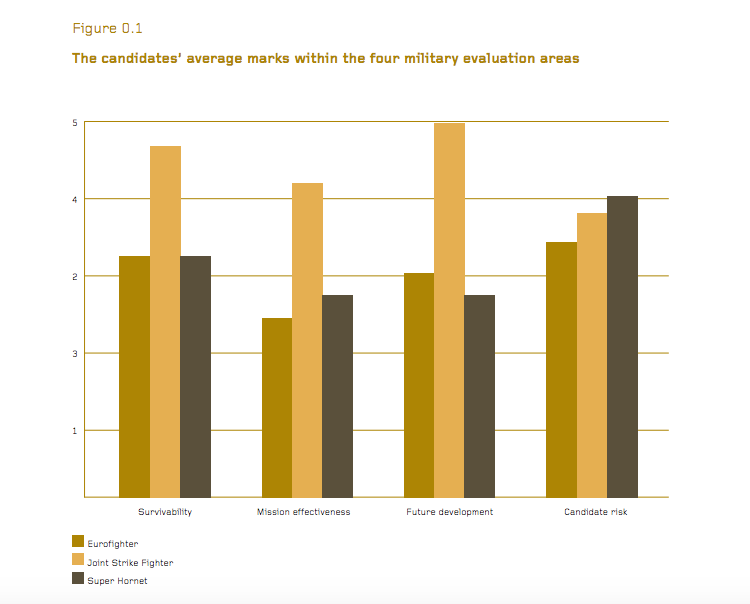Denmark Confirms F-35 after Re-Evaluating Fighter Alternatives
The Danish government has confirmed the Lockheed Martin F-35A Lightning II for its new fighter program after evaluating the Boeing F/A-18 Super Hornet and the Eurofighter Typhoon. It is seeking parliamentary approval to buy 27 of the stealth jets involving a total investment of DKr 20 billion (about $3.1 billion). Deliveries will be from 2021-26. Although the country originally intended to procure 48 F-35s, the current government says that 27 will suffice to replace the current tasking of its F-16s.
Denmark is one of eight international partners in the F-35 program, but like Canada, has not yet placed any orders. In July 2014 it received alternative offers from Boeing and Eurofighter. Dassault and Saab decided not to bid the Rafale and Gripen, respectively, judging that Denmark would eventually confirm its original choice. But in documents released today, the Danish Ministry of Defence has indicated the breadth and depth of its evaluation, which included validation of its methodology by three independent consultants.
The F-35 was the winner of four separate evaluations covering strategic, military, economic and industrial considerations. The Super Hornet—for which Boeing lobbied intensively in Denmark—was placed second in the latter three categories. In the military evaluation, the F-35 was the clear winner on survivability, mission effectiveness and future development possibilities. This was because of its low radar signature “as well as the application of advanced systems and sensors,” according to the evaluators.
They estimated a life-cycle cost (LCC) of nearly $6.5 billion to operate 28 F-35s over a 30-year period. The Ministry of Defence developed an LCC calculation model in conjunction with consultants Deloitte. The model included “costs linked to procurement” as well as ongoing operations and sustainment and “quantifiable risks.” The LCC estimates for the Super Hornet and the Eurofighter were $9.3 billion and $10.9 billion, respectively. These were considerably higher than the F-35 because—according to the evaluators—more airframes would have to be procured since both types have a 6,000-hour life, versus 8,000 hours for the F-35. The number of Eurofighters required was calculated to be 34, and the number of Super Hornets was 38.
The estimate for the Super Hornet was further inflated because “it is a two-seat aircraft, which implies a greater need for flight instruction hours and training of crews.” It is not clear whether or why Boeing chose to bid only two-seat Super Hornets. The Eurofighter had higher maintenance costs per flight hour than the other two contenders, according to the evaluators.
As for industrial cooperation, the 26 initiatives proposed by Lockheed Martin were valued at just over $4 billion, versus about $2.9 billion for the 30 initiatives proposed by Eurofighter, and $2.3 billion for the 68 initiatives proposed by Boeing. However, the Boeing offer was judged “more feasible and mature” than that from Eurofighter. Moreover, the evaluation noted that the F-35 offer was not firm, and its potential was “conditioned on the ability of the Danish defense industry to win contracts in accordance with the ‘best value’ principle.”
http://www.ainonline.com/aviation-news/defense/2016-05-12/denmark-confirms-f-35-after-re-evaluating-fighter-alternatives



